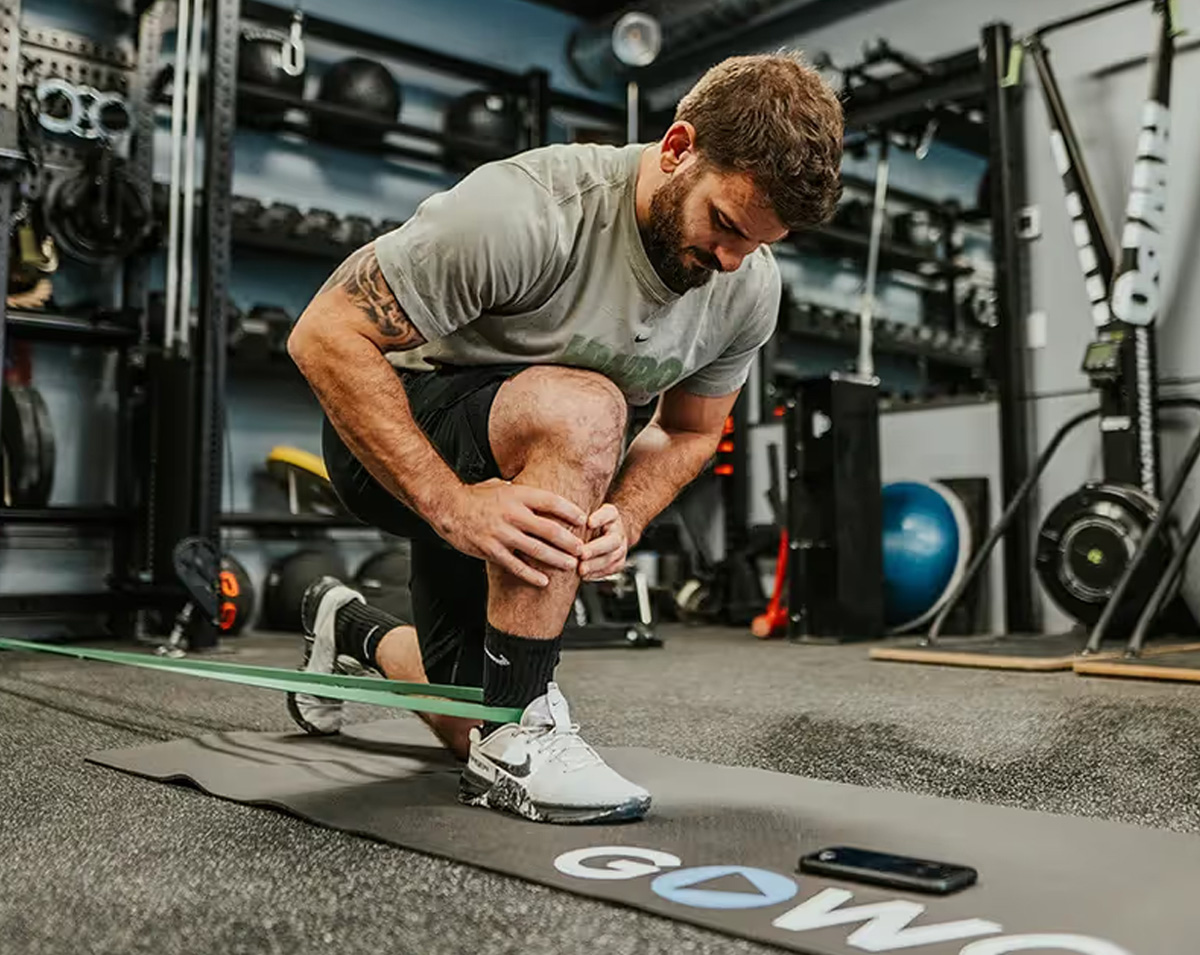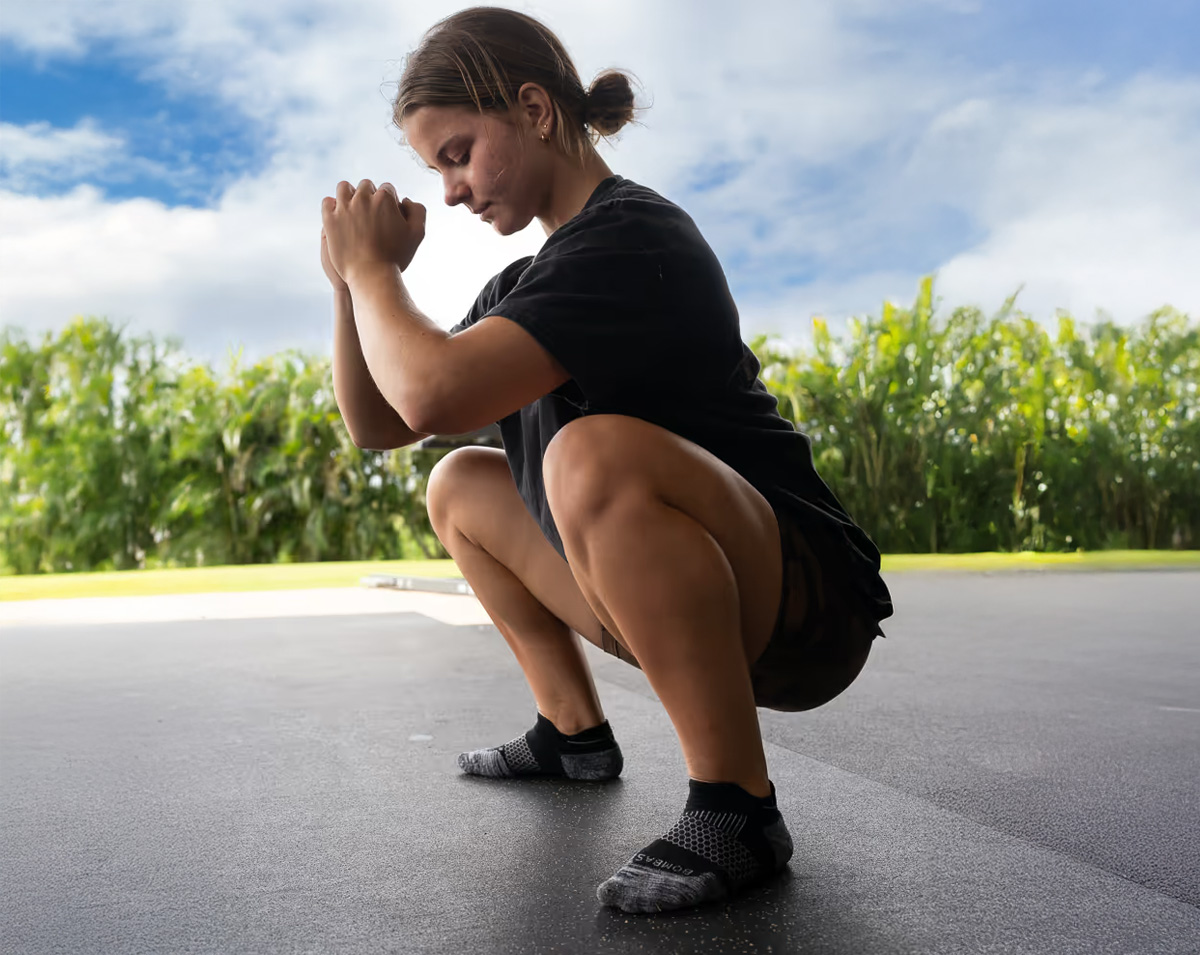
In the sport of CrossFit®, ankle mobility is a frequent scapegoat for poor movement performance, particularly the inability to perform a below-parallel squat. Whether or not the blame is fairly placed, many CrossFit athletes find their way to GOWOD specifically to work on ankle range of motion in hopes of moving the needle in the gym.

When it comes to squats that fail to break parallel, limited ankle dorsiflexion range of motion (ROM) is a common culprit, though is far from the only source of the limitation. It is important to also consider knee and hip flexion ROM, dorsiflexion strength, posterior chain strength, core stability, balance in the squat pattern, and individual differences in body geometry before pointing the finger at ankle dorsiflexion ROM as the sole cause of an above-parallel squat.
Once ankle ROM has been identified as a true limitation, the appropriate treatment is determined by digging deeper to identify the root cause of the ankle restriction itself. Identifying the correct target tissue is critical - no amount of calf stretching will correct a dorsiflexion limitation that is due to a joint restriction or inadequate strength.
The ankle joint is a complex hinge joint, meaning that it only moves in one plane but is also a bit more nuanced than the definition allows. The primary functions of the ankle joint are to support body weight, allow for walking and running, and provide stability during functional activities.

As a hinge joint, the ankle can either dorsiflex (flex) or plantarflex (extend or point). Dorsiflexion, or moving the shin toward the foot, is required for walking, running, descending stairs, squatting (particularly while maintaining an upright torso), and Olympic lifting. Plantarflexion, or moving the foot away from the shin, is required for walking, running, operating a car gas pedal, jumping (box jumps and double unders), and other plyometric movements.
The joint is formed by the meeting of the tibia and fibula, bones of the lower leg, and the talus, the foot bone resting above the calcaneus (heel bone). Ligaments surround and stabilize this joint. An ankle sprain typically refers to the acute over-stretching of at least one of these ligaments. Muscles of the lower leg and foot are responsible for movement at the ankle.
For most CrossFit athletes, ankle dorsiflexion is of much greater concern than plantarflexion. Unsurprisingly, there are many causes of poor ankle dorsiflexion, the most common of which are outlined below.
Most commonly, reduced ankle dorsiflexion is due to soft tissue tightness in the leg, ankle, and foot. The gastroc and soleus muscles, Achilles tendon, and even plantar fascia are often implicated. When these tissues are the source of poor ankle mobility, targeted flexibility and mobility exercises performed consistently and over time will improve ankle mobility. The calf smash is a popular and effective exercise to address soft tissue tightness in the lower leg and ankle.
Stiffness of the ankle joint itself can be the cause of poor ankle dorsiflexion. Ankle mobility exercises such as the banded ankle mob are intended to address ankle joint restriction. In cases of joint impingement such as from a bony block, it is generally safe to perform mobility exercises, though some experimentation may be required to find which exercises are best tolerated. Active range of motion exercises such as the ankle lunge are also beneficial.

Individuals with a history of ankle injury can experience decreased ankle range of motion due to scar tissue formation, soft tissue shortening/stiffening, and swelling. Active and passive range of motion exercises, ankle strengthening and stability exercises, and recovery techniques such as self-myofascial release can help restore ankle mobility by remodeling scar tissue and addressing soft tissue imbalances.
Muscle strength imbalances can also cause poor ankle dorsiflexion mobility. When this is the case, active range of motion exercises such as the Cossack squat are most beneficial.

How much ankle dorsiflexion is needed to squat below parallel safely and with control? This debate returns perennially among CrossFit aficionados and movement nerds (that would be us!). A frequently-cited study by Hemmerich et al. examining range of motion requirements for various functional activities found that the mean maximum ankle dorsiflexion required for a deep squat with heels down was 35.4±5.5 degrees. Another study found that fewer than 30 degrees of ankle dorsiflexion are required for deep squatting. While there is no agreed-upon number, it is clear from the literature that significant ankle dorsiflexion is required to perform a deep squat, though possibly not as much as was once assumed.

In the discussion of ankle ROM required for deep squatting, it would be remiss not to mention the pistol squat, which requires significantly more ankle, knee, hip, and lumbar spine range of motion than its tw0-legged counterpart. The ripple effects of restricted ankle dorsiflexion are magnified in this challenging movement pattern, which can result in poor performance and increased risk of injury. For instance, one might see increased ankle inversion (collapsing inward) to compensate for inadequate ankle dorsiflexion range of motion at the bottom of the pistol squat. Higher in the chain, this will cause increased knee valgus (collapsing inward) and loss of an active, externally rotated hip. These compensatory patterns are inefficient from the standpoint of strength and movement capacity and can lead to injury due to imbalanced tissue loading.

CrossFit athletes working to improve depth in any squat variation must consider limited ankle dorsiflexion in addition to other possible causes. According to the current evidence, the factors contributing to a shallow squat vary between male and female athletes, though addressing ankle dorsiflexion limitation is consistent across the population. Squat depth in men improves most with improved ankle dorsiflexion ROM and hip ROM, if they are limited. Among women, squat depth improves most with improved ankle dorsiflexion ROM and dorsiflexor strength, if they are limited.
Interested in a personalized mobility plan to address restricted ankle ROM and other factors limiting squat depth? Try GOWOD now.
Take our FREE mobility and flexibility test to identify your strengths and areas for improvement. In minutes, get a detailed breakdown of each body zone with insights and personalized guidance to progress.
You’re only 3 steps away from unlocking your full potential.
